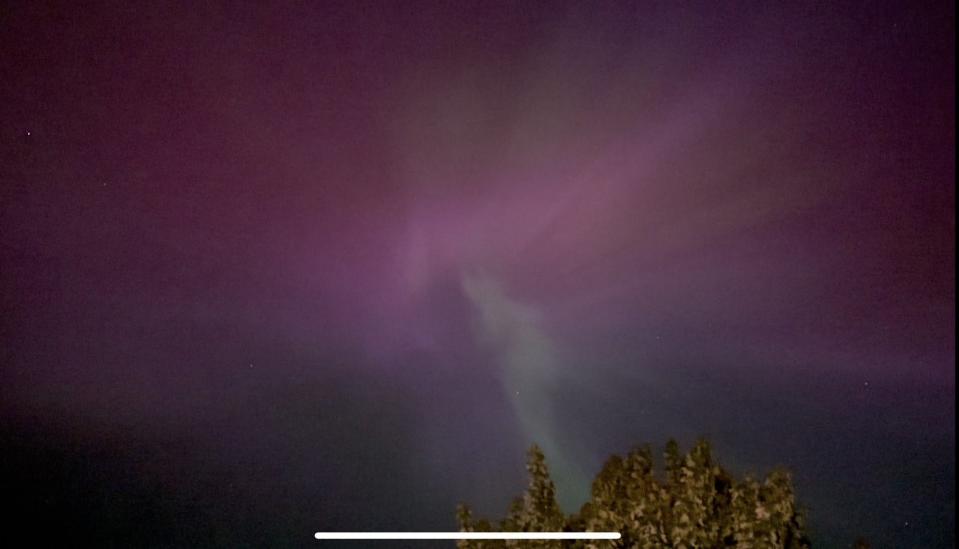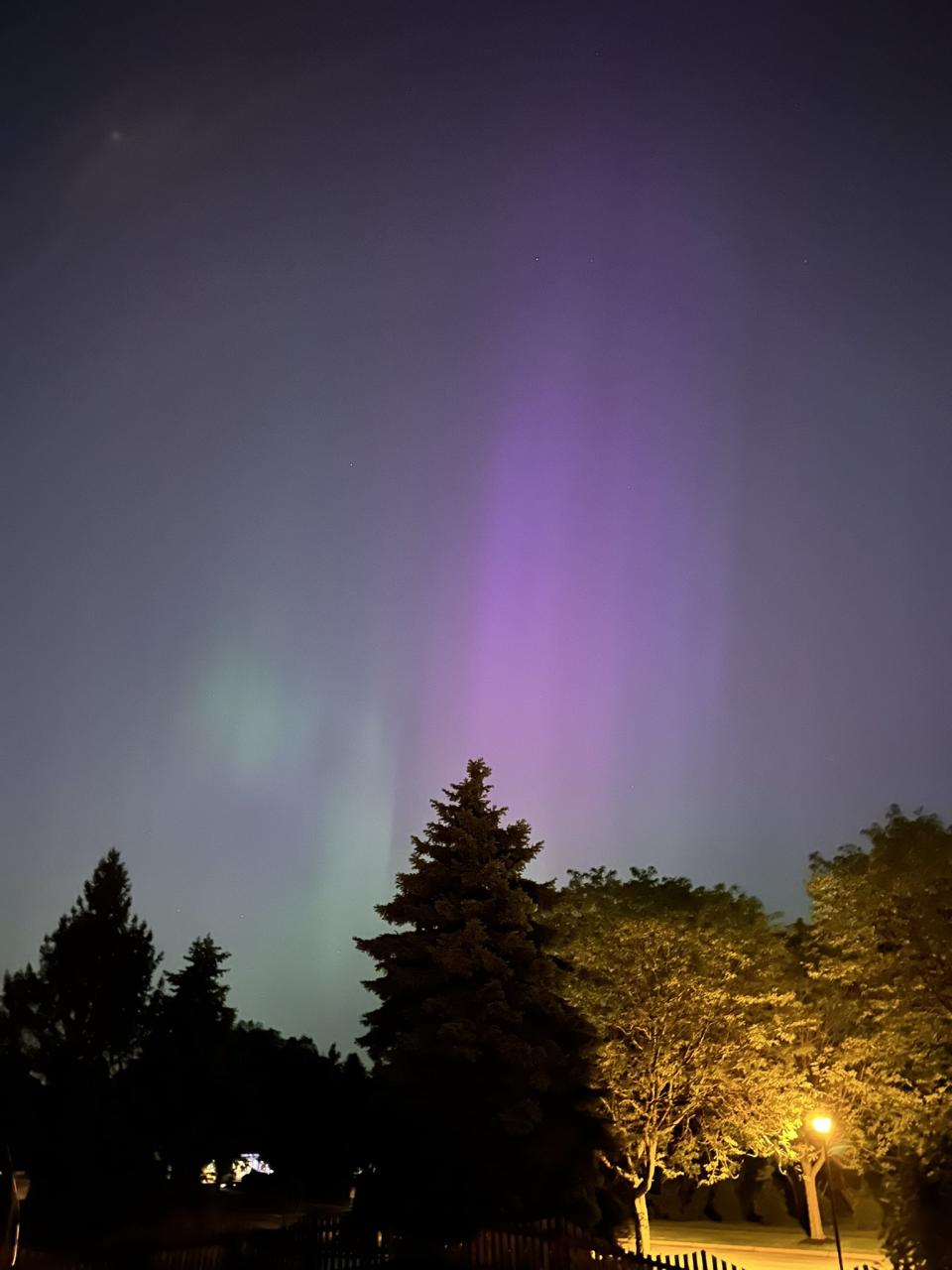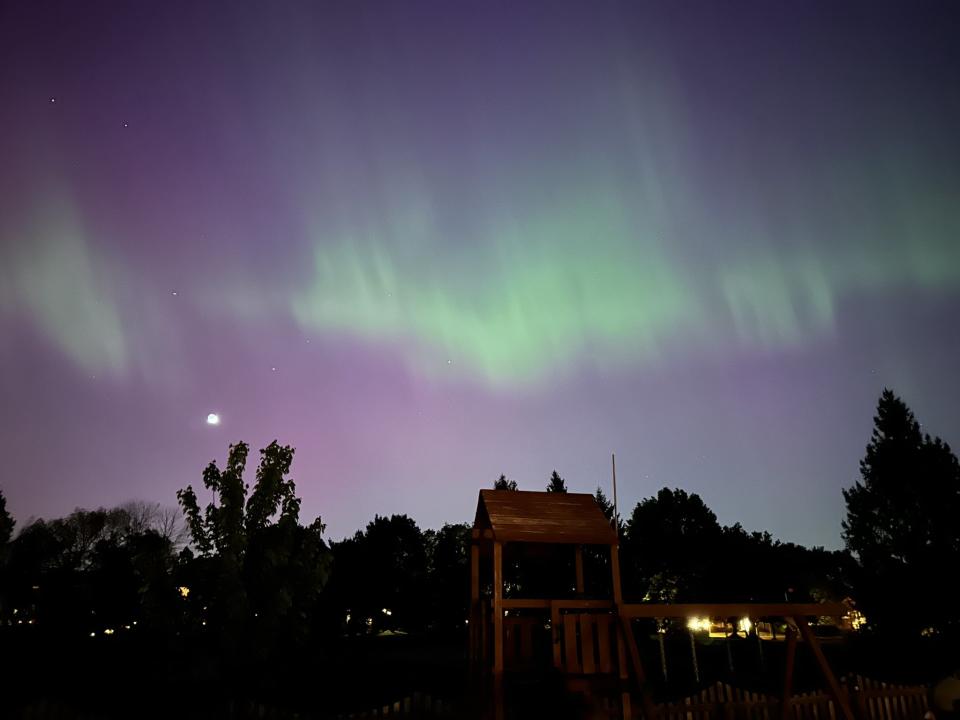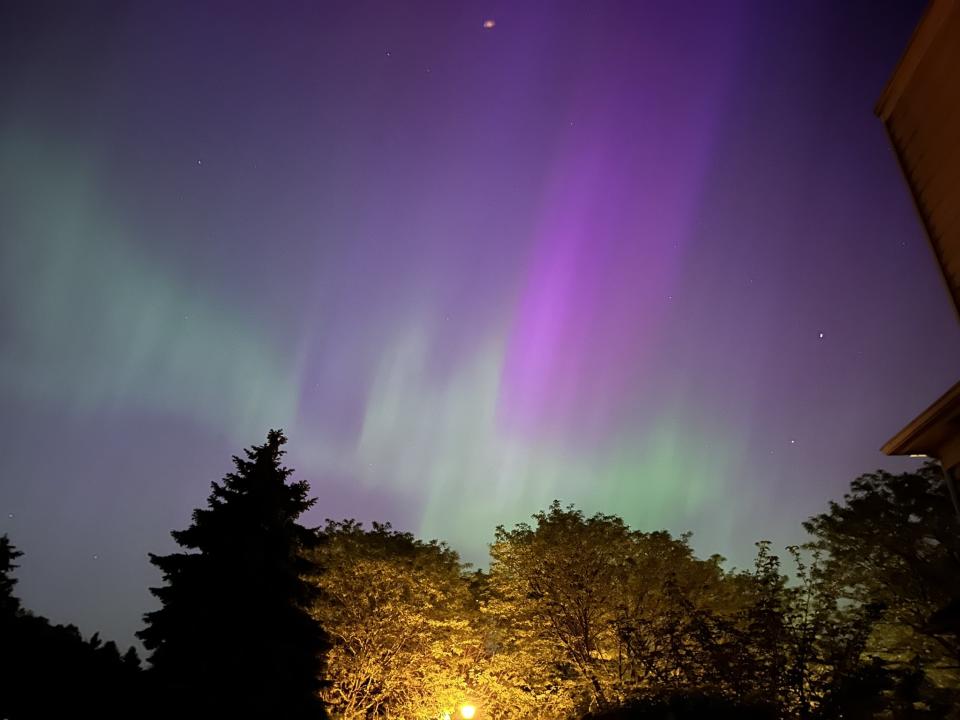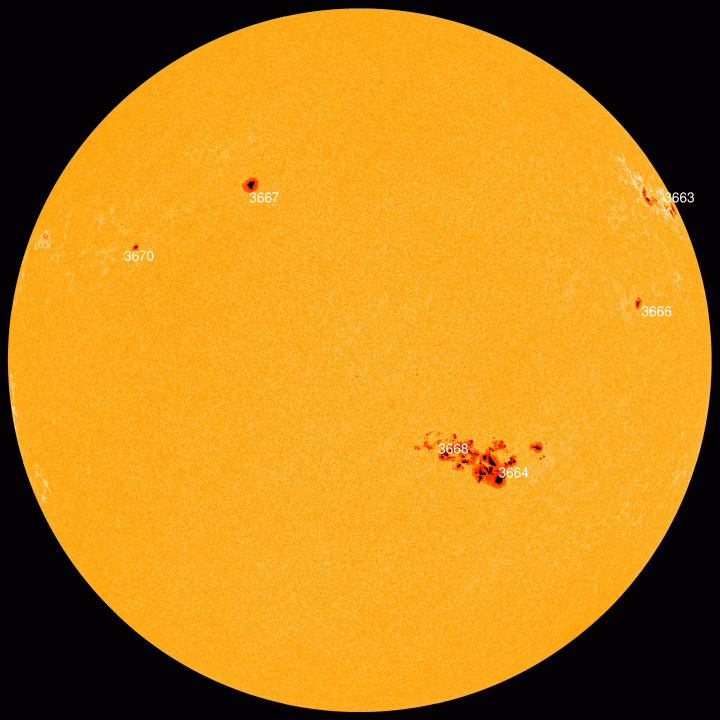Watch: Northern lights seen from FOX 8 tower cam
CLEVELAND (WJW) — Residents across Northeast Ohio got a stunning show as an aurora, or “northern lights” were visible Friday night. It’s a weather phenomenon that’s exceedingly rare for this part of the world.
Credit: John Sabol Credit: John Sabol Credit: John Sabol Credit: John Sabol
For the first time since 2005, the National Oceanic and Atmospheric Administration’s Space Weather Prediction Center issued a Severe Geomagnetic Storm Watch, after spotting five coronal mass ejections pointed at Earth, expected to arrive by midday Friday, May 10, and stay through Sunday, May 12.
It’s an “unusual event,” the NOAA noted.
Ohio man sues BMV for rejecting vanity plate — what does ‘F46 LGB’ mean?
As for whether northern lights would be visible from Northeast Ohio on Friday night, clear skies cooperated giving many a great view.
Sunset on Friday, May 10, was just after 8:30 p.m. But Jay Reynolds, a research astronomer at Cleveland State University, said the likely best time to see an aurora would have been at about 2 a.m. on Saturday.
“Been a long time since we’ve had anything like this,” he said. “The last true aurora which was easily visible to the naked eye was in 2012 and lasted 20 minutes. Yes, we’ve seen some glowing activity in recent years but nothing like this.”
“I would not promise anything. We can predict snow totals better than we can predict auroras — but these look promising.”
The last time Reynolds predicted a visible aurora was “guaranteed” was in 2003, he said.
“A friend called me while driving on the Shoreway. He could not believe was he was seeing. Even with the Shoreway lights, he could see them plain as day,” he said. “I was in Spencer Lake, and you could see the first signs of aurora as the sun was not even quite down yet. Incredible! So powerful — reds, greens, blues, you name it. … What a day.”
The Best Beach in the World is …
Coronal mass ejections are scorching blasts of magnetized plasma from the sun’s corona which can cause electromagnetic disruptions on Earth, creating ribbons of multi-colored light that dance in the skies.
Several strong solar flares have been seen over the past few days from a sunspot cluster that is 16 times the diameter of Earth, according to the NOAA.
That cluster is so big you can see it without a telescope, said Reynolds. Just make sure you’re wearing your solar eclipse glasses; don’t look directly at the sun without proper protection.
There have only been three other “severe” geomagnetic storms seen in this solar cycle, which started in December 2019. The last “extreme” storm on Halloween in 2003 knocked out power in Sweden and South Africa, according to the NOAA.
For the latest news, weather, sports, and streaming video, head to Fox 8 Cleveland WJW.
